How to make pine bonsai with your own hands?
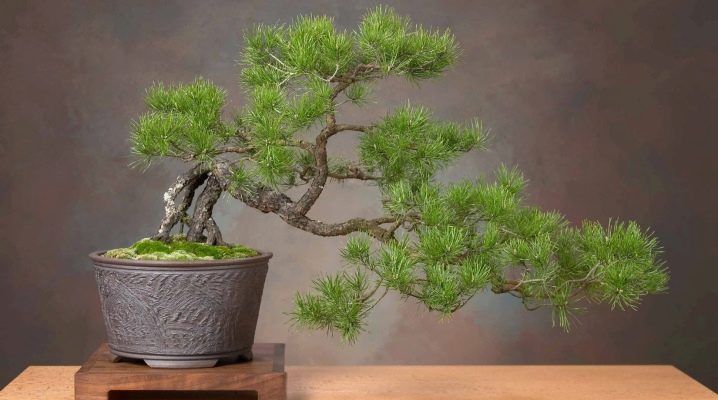
Pine bonsai is a dwarf ornamental tree, the formation of which takes place over several years. It is often used in landscaping, especially when choosing a Japanese theme.
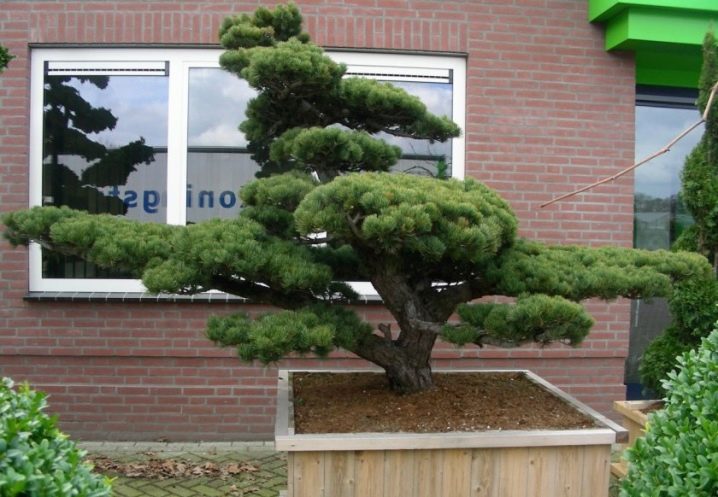
Suitable types of pine
Growing bonsai by itself is impossible if you choose the wrong plant. In this case, the pine should have a strong and stable trunk, a well-developed base and roots slightly crawling out to the surface. A large number of branches is not an advantage, as they can easily disturb the harmony of the object.
It is important that the tree has a classic shape and also looks as natural as possible.
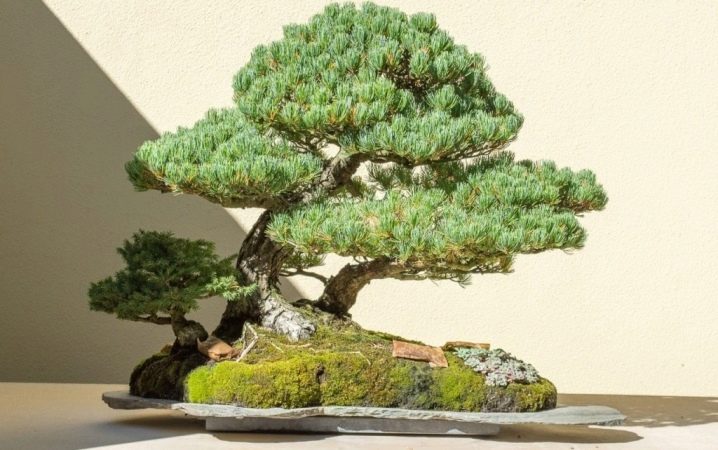
For planting pine bonsai, it is used There are 4 main types of this tree.
Japanese black pine it is considered the most popular choice, as it has an unusual texture of the bark, does not need a nutritious soil mixture and is quite persistent, able to survive even on rocky surfaces. In addition, according to Japanese traditions, it is black pine that should be used to create bonsai.
However, gardeners may encounter some difficulties, both natural and arising from improper care. For example, a black pine tree grows very slowly, so the shaping will take a long time.
Moreover, if the bonsai is improperly irrigated or fed, and the wrong place for planting is selected, then too long needles are likely to occur.

Japanese white pine grows covered with white needles, with a cone shape and a spreading crown. As a result, the resulting bonsai looks very unusual. In addition to the spreading crown and thick trunk, the tree is characterized by the presence of a cone-shaped or columnar shape. The length of one needle ranges from 2 to 6 centimeters. White together with blue is present only on the inside of the needle, and the outside is colored in a deep green hue.

Mountain pine suitable for growing at home, since this plant is absolutely unpretentious, and it is not afraid of temperature jumps. The flowers of the culture with a lush crown are painted in the original light purple hue, although the young tree is more likely a variety of red thanks to its needles. It is quite easy to form the crown of a pine, so the tree can be decorated in different styles.
The color of the needles does not change even with temperature drops or other negative weather events. The length of the formations varies from 2 to 5 centimeters, moreover, they are slightly twisted.
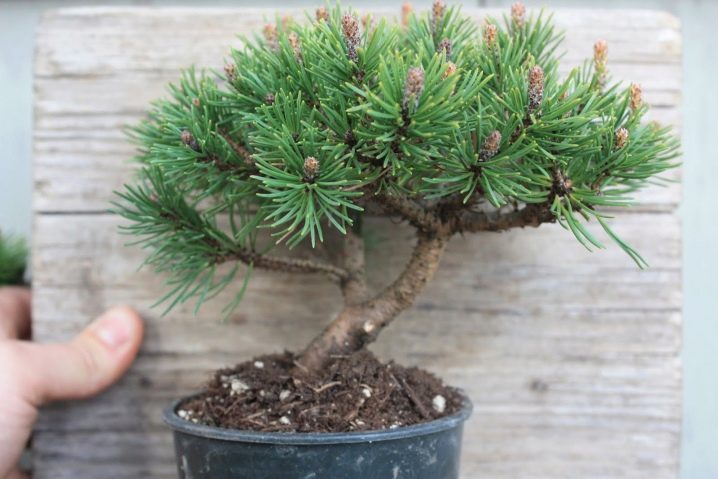
The common pine is the most widespread and affordable tree in Russia, used to form bonsai. Paired needles are colored in a combination of yellow and green, and the bark is formed by scales of a red-brown hue. The length of the sharp formations ranges from 5 to 7 centimeters.
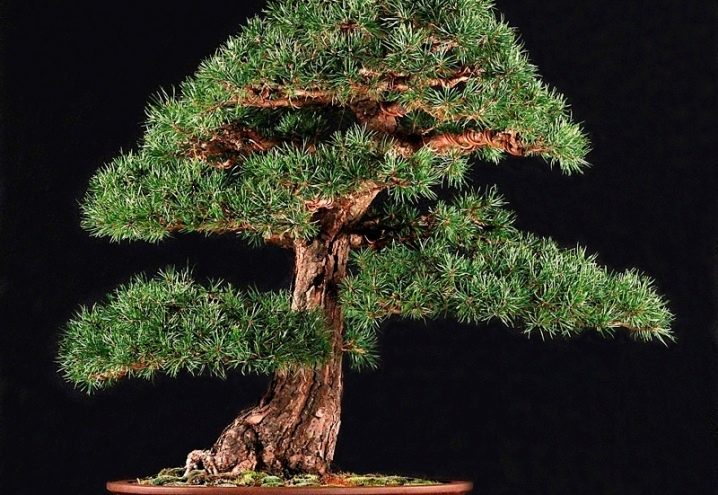
Styles
There are several common styles of pine bonsai, the differences are based on the inclination of the trunk, the direction, the location of the branches, as well as their combination.
- Chokkan has an even trunk, thickened in the lower part, as well as evenly spaced branches. Experts call this bonsai a lonely tree.
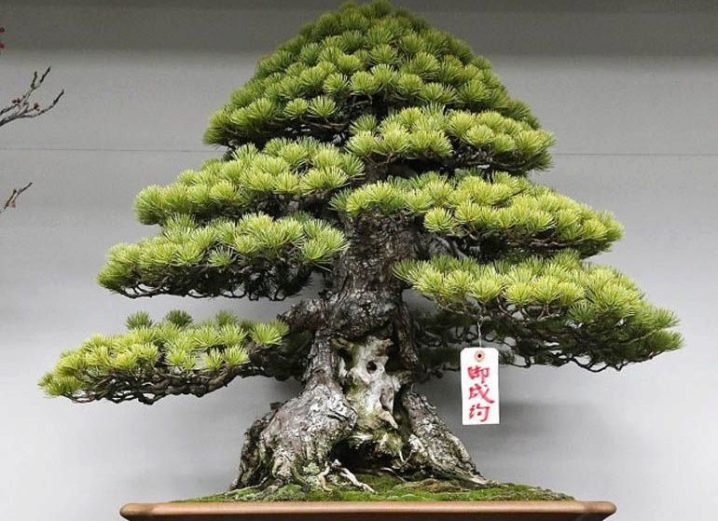
- For Moyogi style an unevenly curved trunk is characteristic, in which the steepness of the bends decreases towards the top of the tree. Such a bonsai should resemble an old tree growing in a mountainous area.
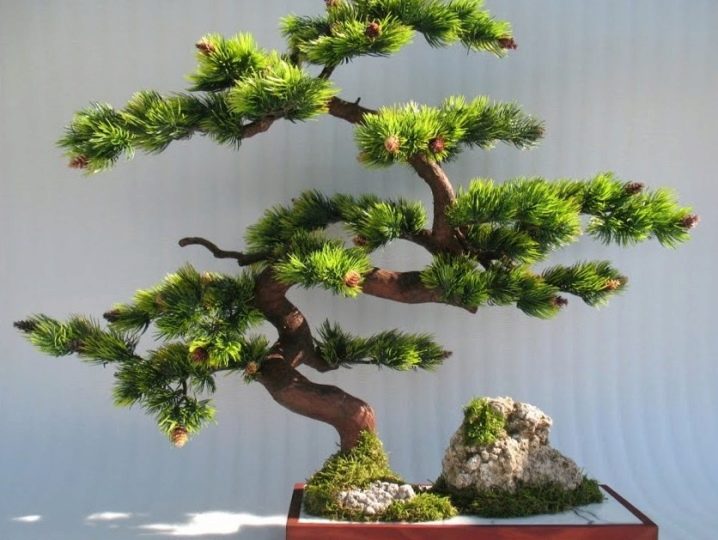
- Sokan, in fact, it is two pines sprouting from the same root. This bonsai is often presented as a gift to couples in love.
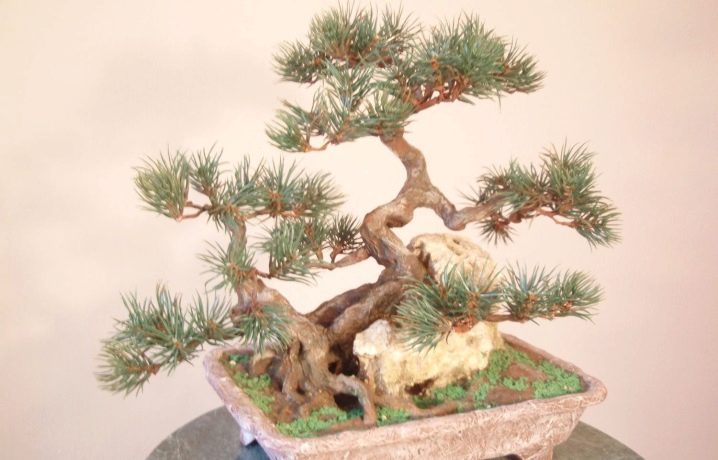
- Have a bonsai shakan there is an inclined trunk, as if bent under the influence of winds.
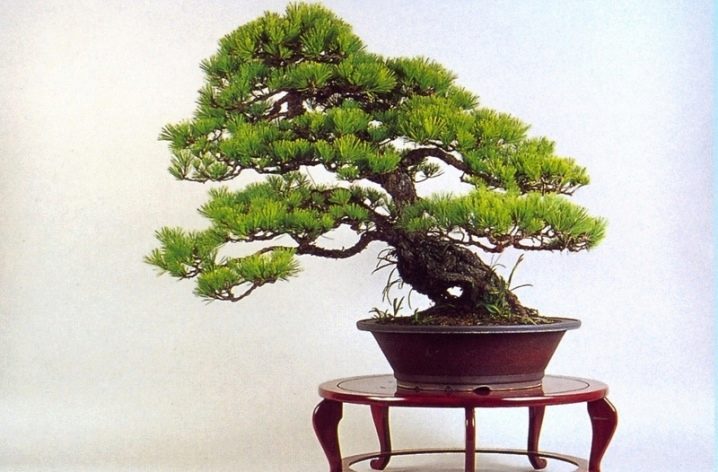
- Kengai - a cascading bonsai that resembles a tree growing on the edge of a cliff.

- Khan Kengai - a curved tree, the top of which is placed at the level of the container.
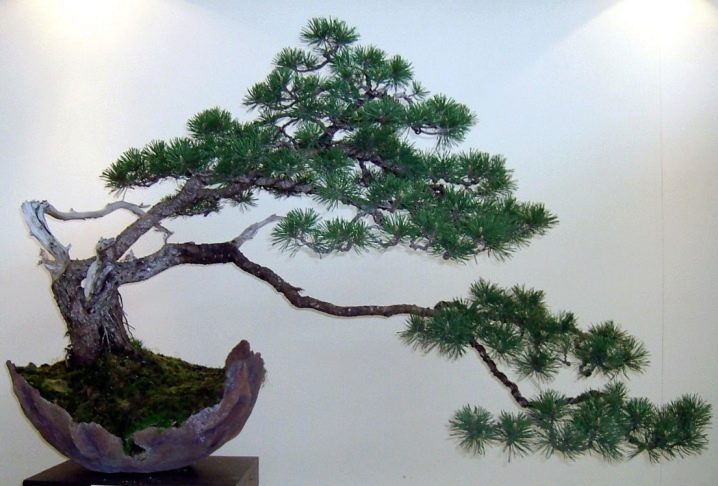
In addition, styles are distinguished Bundzings, Sekijёju, Ishizuki, Hokidachi, Ikadabuki, as well as Yose Ue, representing a group of an odd number of plants.
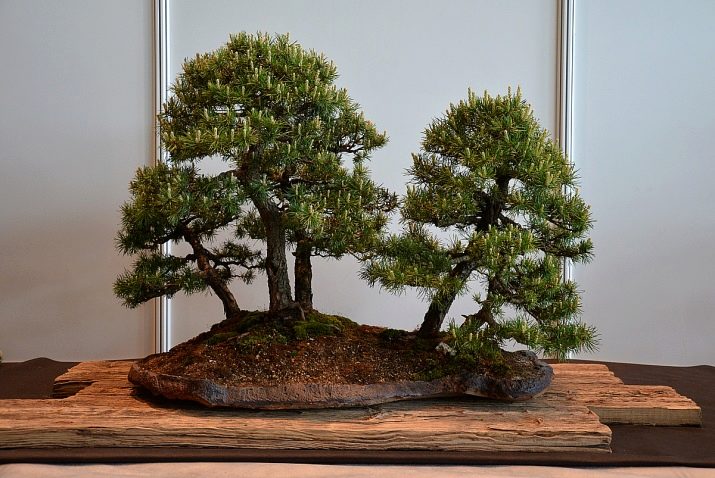
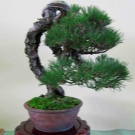
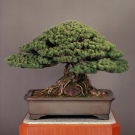
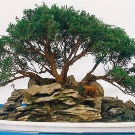
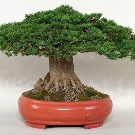
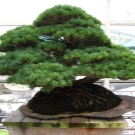
Landing
To plant and successfully grow a classic pine bonsai, it is important to remember one important condition - the root system must be limited so that all development is carried out in the part located above the surface.
Therefore, it is most appropriate to place the bonsai in a small pot.
A large stone is placed in the selected container, which is covered with earth, and the seedling itself is already located on top. First, the roots will have to be formed, with a focus on the main root scion.
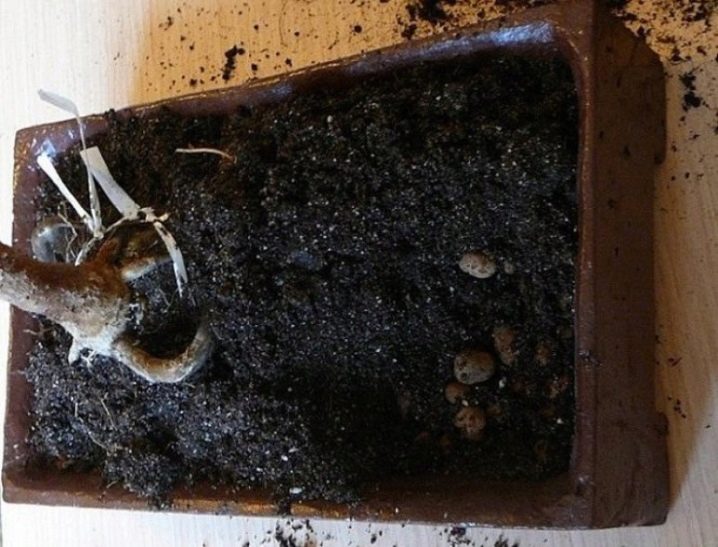
It will be easiest to grow Scots pine on a garden plot or a summer cottage. Having dug a hole, place a stone or concrete inside, and then fill it with soil mixture. The plant is lowered into a recess with a pre-pruned root system.
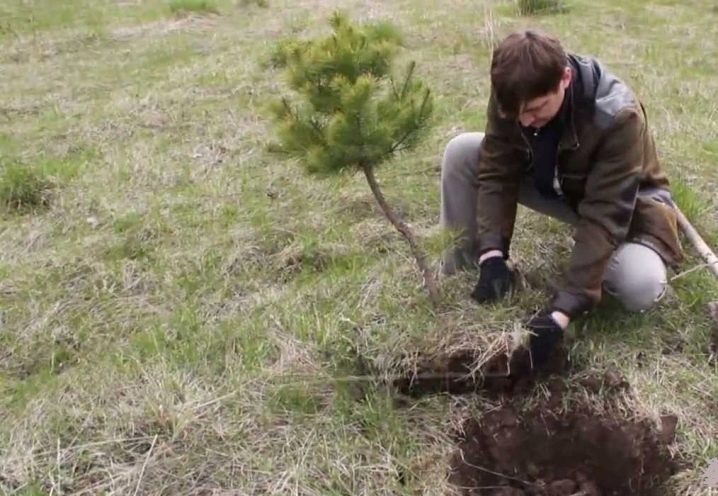
If seeds are used for garden plantings, then they must first be subjected to stratification or frost. Usually, seeds are planted in March. For the successful development of pine, it should be provided with moderate moisture and abundant lighting.
It is important to make it clear that seeds cannot be planted directly in open ground - they will first have to develop for 5 or 6 years in pots of the required size. Only trees that have taken their final shape are subject to replanting.
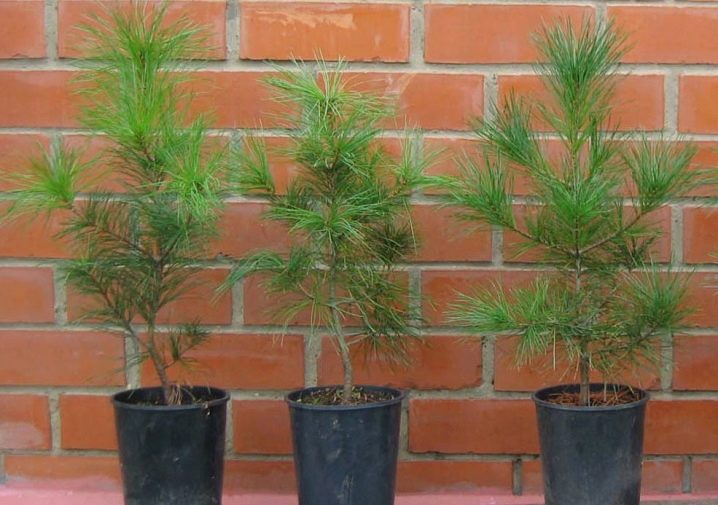
Trimming and shaping
To make a bonsai with your own hands, you have to learn the principles of pruning, and then just follow the instructions step by step.
It is important to take into account that the pine tree grows actively in the second half of spring, unlike other crops, and that individual parts develop at different rates.
The top of the tree develops the fastest, and the lower shoots develop the slowest. The upper side shoots grow at an average rate. Haircutting at home begins even while the pine is in the state of a seedling. A mature tree will be impossible to deform in any way, directing it in the desired direction.
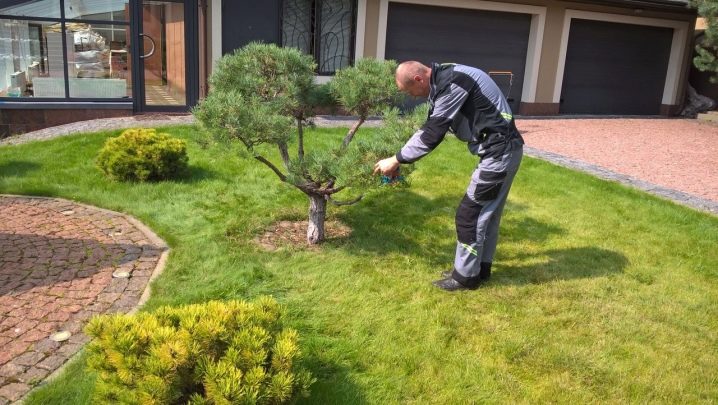
It is necessary to cut the seedling in the fall. To minimize the loss of juices, all slices must be processed with a special tool. Pine buds usually develop in clusters, therefore they can spoil the appearance of the plant. This leads to the fact that they also have to be shaped in a special way. Usually they are removed on the upper branches and left on the lower ones.
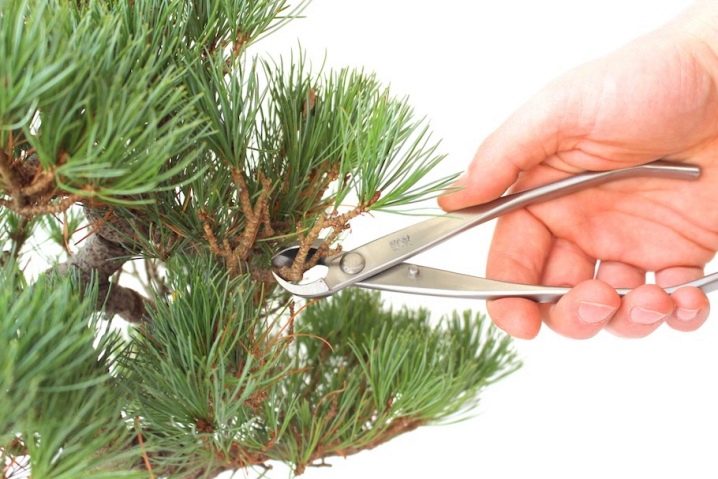
When, at the beginning of spring, the buds begin to stretch, they can be cut off, focusing on the desired crown of the tree.
Experts do not recommend treating all formations in one day - it is advisable to extend the process for a couple of weeks.
The first months after planting, it is not recommended to prune branches, in general. Then the procedure should be carried out at an angle with sharp disinfected scissors. When two shoots appear at the same time, the one that has the greatest length is cut off. Finally, it is important to avoid over-pruning, which can harm the pine.

When forming a bonsai, you should not avoid such a procedure as plucking needles. An excessive amount of these formations leads to the fact that the air and the sun lose their ability to flow to the shoots. In addition, getting rid of the needles also helps to adjust the width and height of the pine crown. They should be plucked from mid-July to early September, eliminating not only old, but also young formations. Sometimes the needles are removed for a more aesthetic appearance of the bonsai.
In this case, you will have to act at the end of the summer period, removing those needles that have grown over the spring and summer.
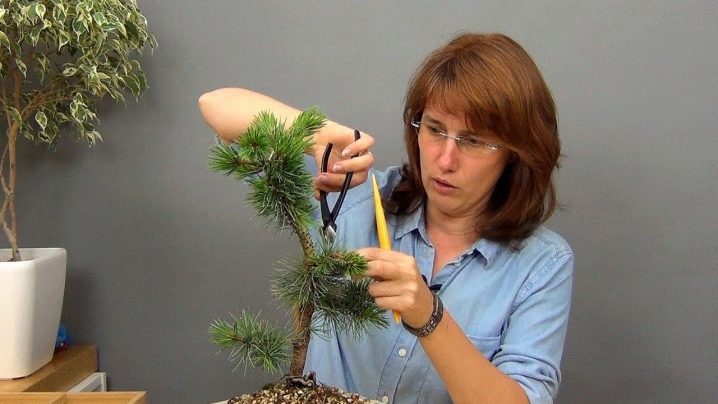
A pine crown is easier to form using wire. It is better to do this at the junction of autumn and winter, when the activity of the tree is reduced. In principle, the wire can be placed on a tree in the fall, and not removed until the beginning of the summer period next year, but then it is extremely important to ensure that it does not grow into the bark.
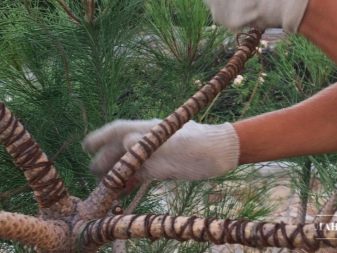
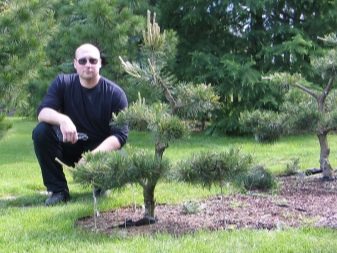
Care
Growing bonsai must necessarily take place in a well-lit area. The shady environment promotes the formation of overly long needles, which harms the aesthetic appeal of the future bonsai. In addition, the lack of sunlight sometimes leads to the fact that pine branches die off. It will not be possible to grow bonsai even in case of constant drafts, therefore, in windy areas, you will have to provide additional protection to the pine.
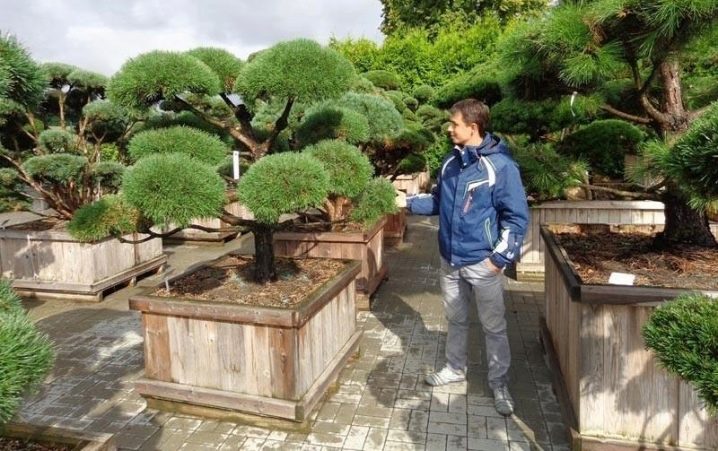
Irrigation of bonsai is carried out regularly, but in moderation. Ideally, you should not wait for the soil to dry out; it should remain constantly moistened. In the first year of life, bonsai is watered especially carefully: twice a week during the warm season and once in the autumn or spring months.
The irrigation system will be able to function efficiently only if there is a drainage layer of expanded clay, gravel or clay shards.
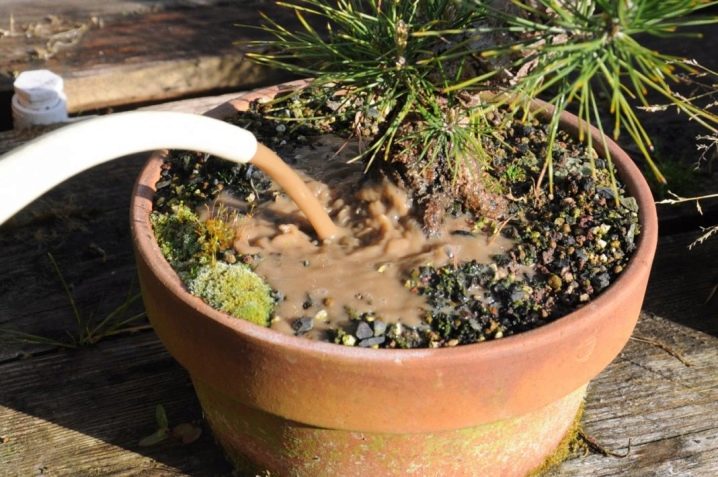
Fertilizers are applied once a month, not more often, and in small quantities. It is preferable to choose complex formulations sold in specialized stores.
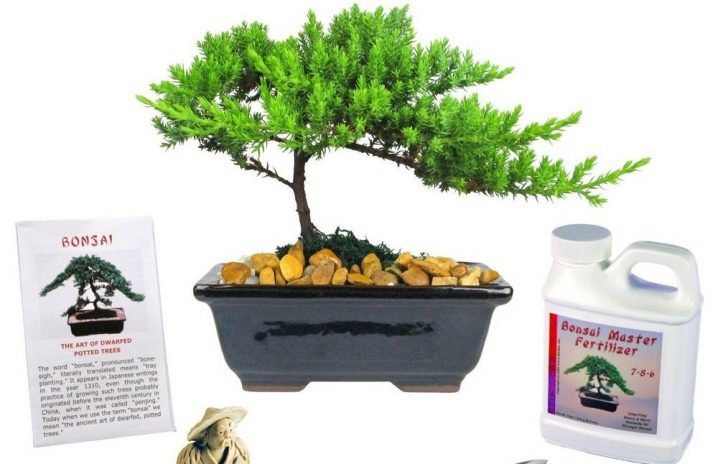
Bonsai propagation is carried out either by seeds, which are planted in the spring, or by cuttings, the rooting of which occurs in the summer. The transplant is carried out in March, even before the kidney swells. For the successful development of pine it is recommended to transplant it every 2 or 3 years, but after the initial planting of seedlings, it is still worth waiting for 5 years.
During the procedure, the roots should not be completely cleaned of clods of earth, on the contrary, the presence of old soil is considered a favorable condition.
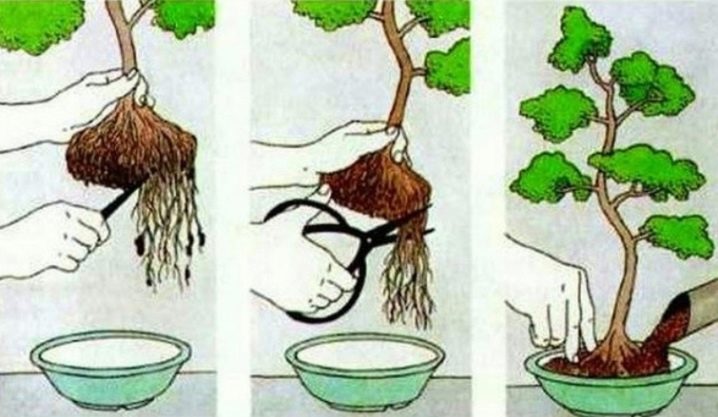
You can learn how to plant pine bonsai in the following video.































I'm interested in mountain pine bonsai for an apartment, not for a summer residence. How to make, and how does bonsai survive at home living conditions?
Mountain pine, like any other pine, needs fresh air and plenty of light. Neither one nor the other is in the room. This means we need a sunny balcony. If this is a problem, it is better to find yourself another tree.
The comment was sent successfully.